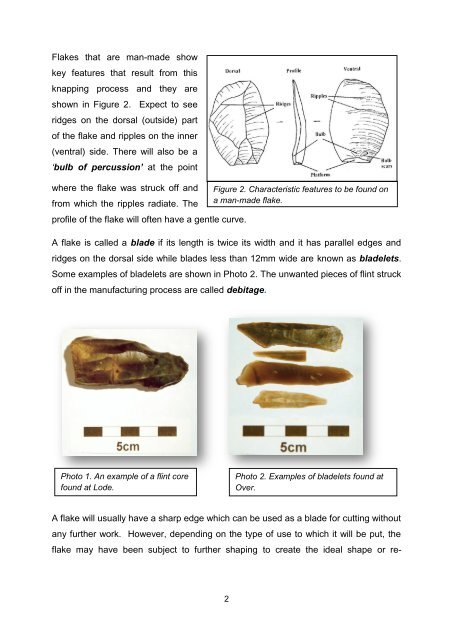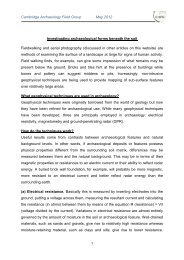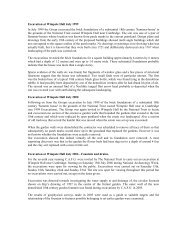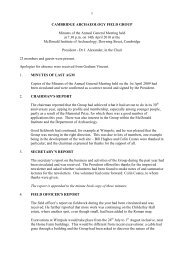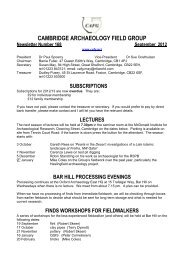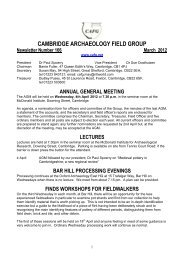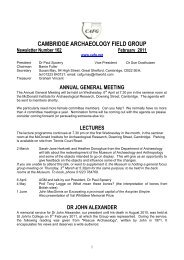Recognising man-made flints - Cambridge Archaeology Field Group
Recognising man-made flints - Cambridge Archaeology Field Group
Recognising man-made flints - Cambridge Archaeology Field Group
You also want an ePaper? Increase the reach of your titles
YUMPU automatically turns print PDFs into web optimized ePapers that Google loves.
Flakes that are <strong>man</strong>-<strong>made</strong> show<br />
key features that result from this<br />
knapping process and they are<br />
shown in Figure 2. Expect to see<br />
ridges on the dorsal (outside) part<br />
of the flake and ripples on the inner<br />
(ventral) side. There will also be a<br />
‘bulb of percussion’ at the point<br />
where the flake was struck off and<br />
from which the ripples radiate. The<br />
profile of the flake will often have a gentle curve.<br />
Figure 2. Characteristic features to be found on<br />
a <strong>man</strong>-<strong>made</strong> flake.<br />
A flake is called a blade if its length is twice its width and it has parallel edges and<br />
ridges on the dorsal side while blades less than 12mm wide are known as bladelets.<br />
Some examples of bladelets are shown in Photo 2. The unwanted pieces of flint struck<br />
off in the <strong>man</strong>ufacturing process are called debitage.<br />
Photo 1. An example of a flint core<br />
found at Lode.<br />
A flake will usually have a sharp edge which can be used as a blade for cutting without<br />
any further work. However, depending on the type of use to which it will be put, the<br />
flake may have been subject to further shaping to create the ideal shape or re-<br />
2<br />
Photo 2. Examples of bladelets found at<br />
Over.


